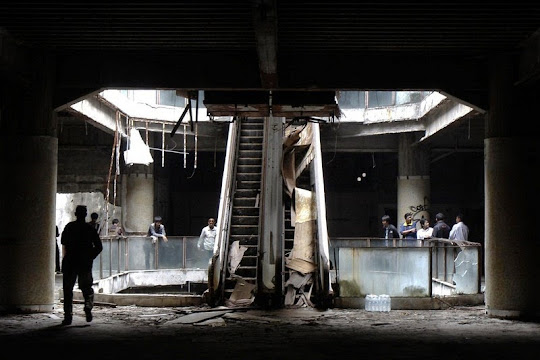The New World shopping mall in Bangkok, Thailand, has been lying abandonment and lifeless since 1997, but not quite. The roofless four-storeyed structure has since flooded with several feet of rainwater and became a paradise for a variety of fish.
The store, which was built in 1982, was 11 storeys high, and very noticeable because it towered over the surrounding area. But it was later revealed that the developers only had permission to construct a four-storey building. In 1997, Thailand’s supreme court ordered the demolition of the seven-storey extension of the shopping centre leaving a gaping hole on the roof. Over the years, rain turned the ground floor of the mall into a shallow pond, and subsequently a breeding ground for mosquitoes.

To fight the mosquito problem, the residents of the area bought fish of assorted species and released it in the waters to eat the mosquitoes and larvae. Apart from the residents, few people knew about the fish pond until recently when photos were shared on Facebook. That has brought in large numbers of curious visitors, alarming city officials who say the building is unsafe.
The Bangkok Metropolitan Administration (BMA) has now decided to remove the fish and release the water from the building.













Source
READ MORE»
The store, which was built in 1982, was 11 storeys high, and very noticeable because it towered over the surrounding area. But it was later revealed that the developers only had permission to construct a four-storey building. In 1997, Thailand’s supreme court ordered the demolition of the seven-storey extension of the shopping centre leaving a gaping hole on the roof. Over the years, rain turned the ground floor of the mall into a shallow pond, and subsequently a breeding ground for mosquitoes.

To fight the mosquito problem, the residents of the area bought fish of assorted species and released it in the waters to eat the mosquitoes and larvae. Apart from the residents, few people knew about the fish pond until recently when photos were shared on Facebook. That has brought in large numbers of curious visitors, alarming city officials who say the building is unsafe.
The Bangkok Metropolitan Administration (BMA) has now decided to remove the fish and release the water from the building.













Source























